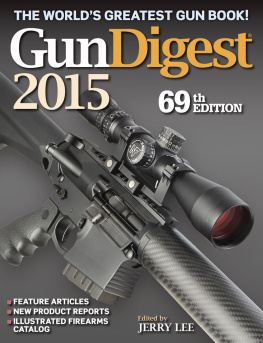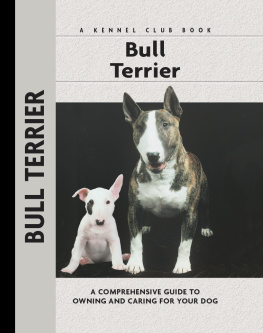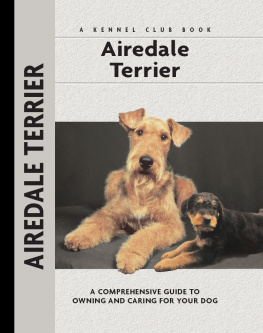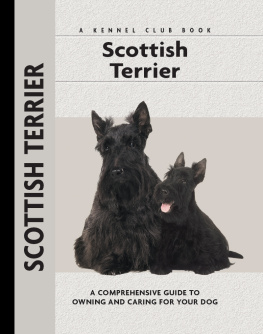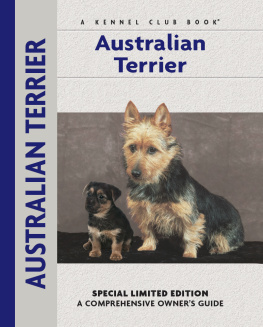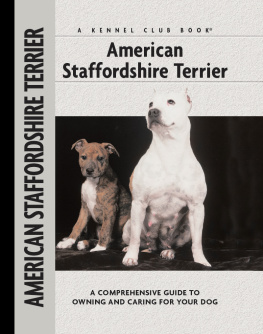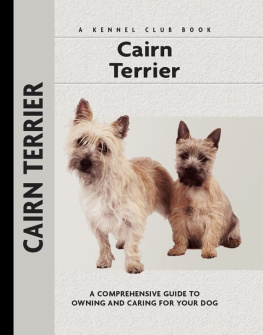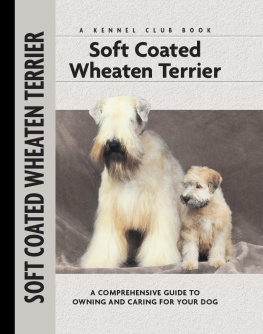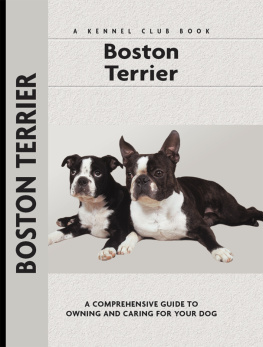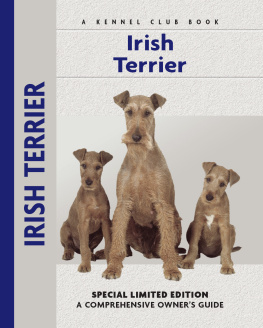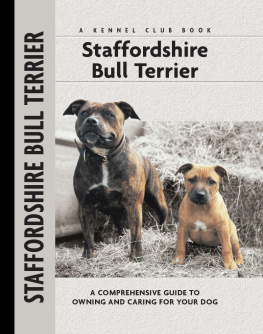Physical Characteristics of the Manchester Terrier
(from the American Kennel Club breed standard)
Head: Long, narrow, tight skinned, and almost flat with a slight indentation up the forehead. It resembles a blunted wedge in frontal and profile views. There is a visual effect of a slight stop as viewed in profile.
Ears: Either the naturally erect ear, the cropped ear, or the button ear. The naturally erect ear, and the button ear, should be wider at the base tapering to pointed tips, and carried well up on the skull. Cropped ears should be long, pointed and carried erect.
Neck: Slim and graceful, and of moderate length. It gradually becomes larger as it approaches, and blends smoothly with the sloping shoulders.

Eyes: Small, bright, and sparkling. They are set moderately close together, slanting upwards on the outside. Pigmentation must be black.
Muzzle: Well filled under the eyes with no visible cheek muscles. The underjaw is full and well defined and the nose is black.
Lips: Lie close to the jaw. The jaws should be full and powerful with full and proper dentition. The teeth are white and strongly developed with a true scissors bite. Level bite is acceptable.
Forequarters: The shoulder blades and the upper arm should be relatively the same length. The distance from the elbow to the withers should be approximately the same as the distance from the elbow to the ground. The elbows should lie close to the brisket. The shoulders are well laid back. The forelegs are straight, of proportionate length, and placed well under the brisket. The pasterns should be almost perpendicular.
Feet: Compact and well arched. The two middle toes should be slightly longer than the others. The pads should be thick and the toenails should be jet black.
Topline: Slight arch over the robust loins falling slightly to the tail set.
Tail: Moderately short reaching no further than the hock joint. It is set on at the end of the croup. Being thicker where it joins the body, the tail tapers to a point. The tail is carried in a slight upward curve, but never over the back.
Hindquarters: Muscular with the length of the upper and lower thighs being approximately equal. The stifle is well turned. The hind legs are carried well back. The hind feet are shaped like those of a cat with thick pads and jet black nails.
Coat: Smooth, short, dense, tight, and glossy; not soft.
Size: Over 12 pounds and not exceeding 22 pounds.
Color: Jet black and rich mahogany tan, which should not run or blend into each other, but abruptly form clear, well defined lines of color. There shall be a very small tan spot over each eye, and a very small tan spot on each cheek.

Contents
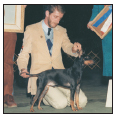
Learn about one of the oldest of all British dogs, the Manchester Terrier, known formerly as the Black and Tan Terrier. Discover which dogs are in the background of the breed and meet the foundation breeders in both the UK and US.
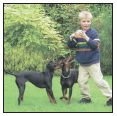
Is the Manchester Terrier the right dog for you? Inquire about all the wonderful attributes that make this handsome, versatile breed so adaptable and able to fit into a variety of living situations. Consider the positive aspects of the breed as well as drawbacks and potential health concerns.
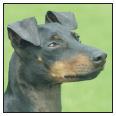
Learn the requirements of a well-bred Manchester Terrier by studying the description of the breed set forth in the American Kennel Club standard. Both show dogs and pets must possess key characteristics as outlined in the breed standard.
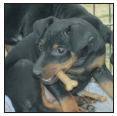
Find out about how to locate a well-bred Manchester Terrier puppy. Discover which questions to ask the breeder and what to expect when visiting the litter. Prepare for your puppy-accessory shopping spree. Also discussed are home safety, the first trip to the vet, socialization and solving basic puppy problems.
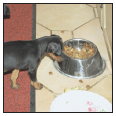
Cover the specifics of taking care of your Manchester Terrier every day: feeding for the puppy, adult and senior dog; grooming, including coat care, ears, eyes, nails and bathing; and exercise needs for your dog. Also discussed are the essentials of dog identification and car travel.
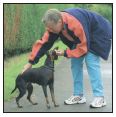
Begin with the basics of training the puppy and adult dog. Learn the principles of house-training the Manchester Terrier, including the use of crates and basic scent instincts. Get started by introducing the pup to his collar and leash and progress to the basic commands. Find out about obedience classes and other activities.
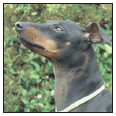
By Lowell Ackerman DVM, DACVD
Become your dogs healthcare advocate and a well-educated canine keeper. Select a skilled and able veterinarian. Discuss pet insurance, vaccinations and infectious diseases, the neuter/spay decision and a sensible, effective plan for parasite control, including fleas, ticks and worms.

Know when to consider your Manchester Terrier a senior and what special needs he will have. Learn to recognize the signs of aging in terms of physical and behavioral traits and what your vet can do to optimize your dogs golden years.

Step into the center ring and find out about the world of showing pure-bred dogs. Heres how to get started in AKC shows, how they are organized and whats required for your dog to become a champion. Take a leap into the realms of obedience trials (including rally obedience) and agility trials.
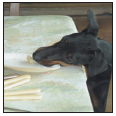
Analyze the canine mind to understand what makes your Manchester Terrier tick. The following potential problems are addressed: aggression (fear-biting, inter-canine and dominant), separation anxiety, sexual misconduct, chewing, barking and food-related problems.
K ENNEL C LUB B OOKS M ANCHESTER T ERRIER
ISBN 13: 978-1-59378-384-6
eISBN 13: 978-1-62187-017-3
Copyright 2007 Kennel Club Books An Imprint of I-5 Press A Division of I-5 Publishing, LLC
Next page

